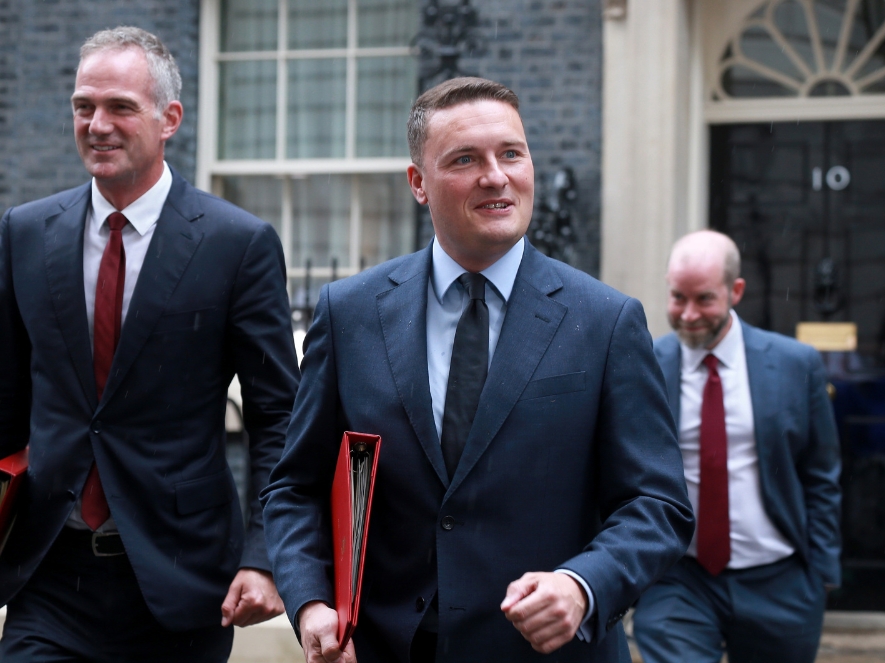The review will set out what budget the government has granted each department for their planned day-to-day spending, such as salaries and administrative costs, for the next three years.
This includes the Department for Health and Social Care.
It will also outline capital spending (investment) for the next four years in infrastructures and public services, including schools, hospitals, new roads and military equipment.
Notably, the review only covers spending that can be planned in advance, which accounts for around 40% of all public spending.
The 2025 Spending Review has taken place in two phases.
In October, the outcome of the first phase was announced by Reeves in the Autumn Budget, which confirmed departmental budgets for 2024-25 and set budgets for 2025-26.
This Wednesday, phase two will be outlined, setting the day-to-day spending budgets for 2026-29 and capital spending for 2026-30.

In the Autumn Budget, taxes were raised by £40bn. At the time, Reeves promised this would be a “one-off” to recover from the economic issues the Labour party claims it inherited from the Conservative government.
Phase one also saw a £600m grant for social care and the announcement of a ’10 year plan’ to reform the NHS, allocating £22.6bn to go into the daily health budget.
Ahead of Wednesday’s announcement, Labour has already unveiled some phase two changes.
This includes a cut to the overseas aid budget, an extra £5bn a year on defence, £1bn to go to the extension of free schools meals, and a £15.6bn package to fund travel developments in Greater Manchester and the Midlands.
So far, nothing has been revealed in regards to health and social care, leaving many eagerly awaiting the announcement…

In the past, the Department of Health and Social Care has had steady funding increases, and the government has stated that the Review will aim to tackle long-term pressures on public spending, including an ageing population.
This suggests that health and social care could receive a large sum.
Since it was announced that NHS England would be abolished and merged with the Department of Health and Social Care, it is expected that it will allocated a large budget.
The BBC states nearly 40% of total departmental expenditure this year will go to DHSC, due to its size.
However, social care providers have warned that the Review needs to deliver a large, long-term, and committed investment in order to recover the funding deficit it is currently in.
The Autumn Budget left social care providers disappointed, feeling social care had been overlooked.
Many worry the same is set to happen in this second phase. If a big emphasis is put on the NHS, social care could be left behind in the Review.
The NHS Confederation and leaders in social care have both issued calls for better care funding, stating that the NHS cannot improve without equal efforts to improve the state of social care.
Rory Deighton, acute director of the NHS Confederation, has commented: “Beyond NHS spending, we agree that the public health grant and social care investment are crucial to a healthier future.
“NHS leaders know from bitter experience that protecting NHS funding while cutting other areas ends up costing more in the long run.”
Many providers have also submitted requests to HM Treasury ahead of the Spending Review.
ADASS released a document calling for planning to raise accessibility standards for new care homes, ensure equitable access to data between health and social care and supporting councils, and support to utilise technology.
The Homecare Association similarly submitted a representation to HM Treasury highlighting key issues including the rise of National Insurance Contributions and National Minimum Wage which increased delivery costs for care without providing more funding.
In a recent statement, CEO Jane Townson stated: “We support the government’s 10-year health plan. This is the right course but the government must stop pretending it can deliver this plan by focusing only on the NHS and starving social care.
“The evidence is now overwhelming and ignoring it in this Spending Review would be a catastrophic mistake.”
Additionally, local authorities have already cautioned that the Spending Review will determine whether they can set a balanced budgets, with six in ten stating they are not confident.
Without proper funding, they warn, local services may have to be cut including social care services.
Cllr Tim Oliver, Chair of the County Councils Network, has said: “It is almost unthinkable to imagine the situation getting worse, but a real-terms cut in the Spending Review for the Ministry of Housing, Communities and Local Government’s Budget would be just that.”

What is a Spending Review?
A Spending Review is a process the government uses to set budgets for all departments for future years. Carried out by HM Treasury, it outlines expenditure limits on services like the NHS, prisons, and the armed forces. It also covers things the government is expected to invest in such as research and infrastructure.
However, it only covers 40% of all public spending, as this is the limit to what can be planned in advance.
When was the last Spending Review?
The last multi-year Spending Review was in 2021 and set department budgets up to 2024-25. It was released under Boris Johnson.
What period does the Spending Review cover?
The Spending Review outlines planned day-to-day spending totals for all departments in government for the period from 2026/27 to 2028/29. The Spending Review will also cover a further year for investment spending, outlining plans for up to 2030.
What is the difference between a Spending Review and a Comprehensive Spending Review?
A Spending Review tends to focus on one or several sections of public spending whereas a Comprehensive Spending Review looks at and focuses on spending in every government department, without reference to past plans.











